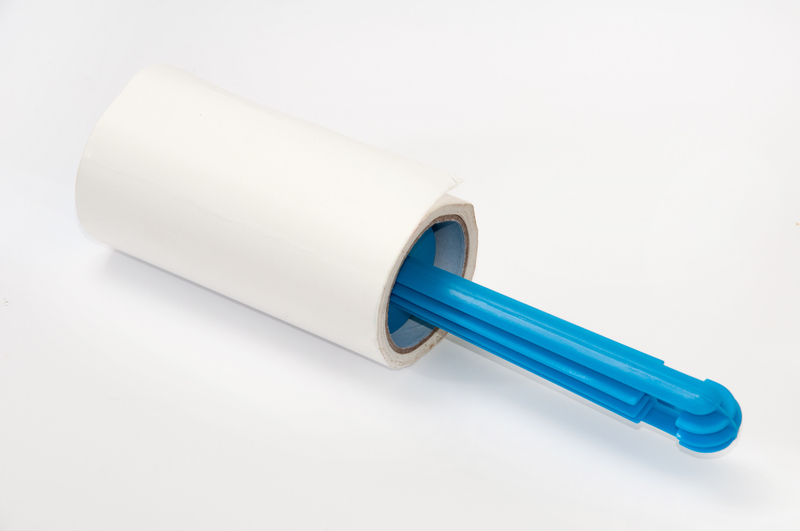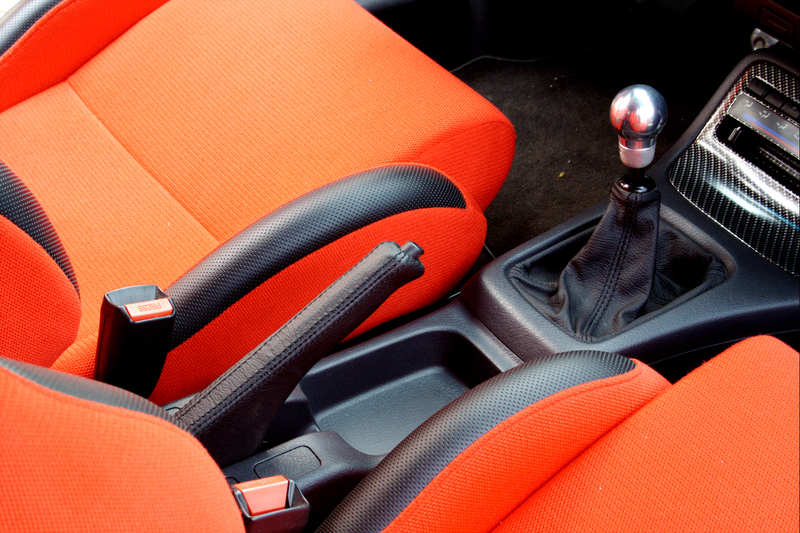Say Goodbye to Stubborn Stovetop Burnt Residue with These Easy Solutions
Posted on 20/06/2025
Say Goodbye to Stubborn Stovetop Burnt Residue with These Easy Solutions
Stovetops are a cornerstone of any kitchen, faithfully standing by us meal after meal. However, they also spend a lot of time fighting off spills, spatters, and unfortunately, burnt-on residue. Whether you're a passionate home cook or just someone who loves a clean kitchen, stubborn stovetop burnt residue is a challenge you're likely familiar with. But fear not! There are effective, easy-to-follow solutions to restore your stovetop's sparkle.
If you've struggled trying to eliminate burnt-on stains and crusty patches, you're not alone. This comprehensive guide will walk you through tried-and-tested methods to safely and efficiently remove burnt food residue from your stovetop, helping you reclaim your kitchen's shine and hygiene.

Understanding Stovetop Burnt Residue
Before diving into removal techniques, it's important to understand what causes burnt-on residue. When food spills, boils over, or sauces splatter onto a hot stovetop, intense heat bonds food particles to the surface. Over time, repeated exposure makes the residue even harder to remove--especially if the stovetop isn't cleaned promptly after each use.
Common contributors to stubborn stovetop stains include:
- Sugary syrups (caramelized sugar burns quickly)
- Grease and oil that splatter
- Boiled-over pasta water
- Spilt sauces and soups
- Neglected or delayed cleaning
Depending on your stove's surface--glass, ceramic, stainless steel, or coil burners--burnt-on grime can be particularly tricky. But with the right approach, removing burnt residue from your stovetop becomes a manageable task.
Essential Supplies for Stovetop Deep Cleaning
Before tackling stubborn, burnt stovetop stains, gather these cleaning necessities:
- Baking soda (a non-abrasive, natural cleaning agent)
- White vinegar (helps break down burnt food)
- Dish soap (dissolves grease and residue)
- Spray bottle (for mixing and applying cleaning solutions)
- Non-scratch scrubber or sponge
- Plastic scraper or old credit card (for tough spots)
- Microfiber cloths (for a streak-free finish)
- Lemon juice (optional, for natural deodorizing)
- Rubber gloves (to protect your skin)
Step-By-Step Solutions to Remove Burnt Stovetop Residue
1. Immediate Boil-Over Cleanup (If Fresh)
The best time to handle a stovetop spill is immediately after it happens--once the burner has cooled down. Using a damp, soapy sponge can often lift away residue before it has time to adhere. Always remember to turn off and allow the surface to cool to avoid burns.
2. Baking Soda & Vinegar Paste - The Classic Solution
This time-honored technique works wonders on stubborn stovetop stains and burnt patches:
- Sprinkle a generous layer of baking soda directly onto the burnt residue.
- Spray or drizzle white vinegar over the baking soda. The chemical reaction will create fizzing action that helps loosen stuck-on food.
- Let sit for 10-15 minutes. This allows the mixture to break down the grime.
- Gently scrub the area with a non-scratch scrubber, using circular motions.
- Wipe clean with a damp microfiber cloth, and repeat as needed for stubborn patches.
*For extra tough spots, make a thicker paste and let it sit even longer--a few hours or even overnight, if needed.
3. Steam Cleaning for Burnt Residue Removal
For a more gentle but highly effective approach, try using steam:
- Fill a pot with water and bring to a boil on the dirty burner.
- Let the steam loosen stubborn grime for 5-10 minutes.
- After turning off the burner and letting it cool slightly, wipe away soft residue.
- If needed, repeat or combine with baking soda scrub.
This method is especially useful for glass and ceramic stovetops, minimizing the need for harsh scrubbing.
4. Dish Soap and Hot Water Soak
If the burnt residue is notoriously stubborn or greasy, hot soapy water can work wonders:
- Soak a cloth or sponge in hot, soapy water.
- Lay the soaked cloth directly over the burnt spots and let it sit for 10-20 minutes.
- Once the residue softens, scrub gently.
- Rinse and dry thoroughly.
5. Non-Toxic Commercial Cleaners
If DIY methods aren't enough, there are eco-friendly stovetop cleaners formulated specifically for burnt residue removal. Look for non-abrasive gels or sprays labeled for your specific stovetop type (ceramic, glass, or stainless steel). Always follow manufacturer guidance for safety and optimal results.
Targeted Solutions for Different Stovetop Types
How to Remove Burnt Food from Glass or Ceramic Stovetops
- Use only non-scratch pads to avoid permanent damage.
- Apply the baking soda-vinegar or commercial mineral cream solution, then scrub gently.
- Never use metal scrapers, steel wool, or abrasive powders.
How to Clean Burnt Residue from Stainless Steel Stoves
- Follow the direction of the grain when wiping or scrubbing.
- Try a paste of baking soda and water for burnt food removal--avoid acidic substances that may discolor stainless steel.
- Finish with a rinse and buff dry for streak-free shine.
Tips for Electric Coil Burners
- Remove coils (when safe) and drip pans from the stove for separate cleaning.
- Use soapy water or baking soda paste to address burnt-on food. Let components dry completely before reinstalling.
Gas Stove Grates and Burner Caps
- Soak grates and caps in hot water with dish soap or vinegar for at least 20 minutes to soften residue.
- Scrub using a nylon brush or non-scratch pad.
- Stubborn burnt spots may require soaking overnight. Rinse and dry thoroughly before placing back.
Prevent Future Build-Up of Burnt Residue
While it's important to know how to clean stubborn residue from your stovetop, preventing build-up is even better! Try these helpful, proactive habits:
- Wipe spills promptly after each use, once the stovetop cools slightly.
- Use burner liners or stove protector mats for easy clean-up and surface protection.
- Cook with covered pots and pans to minimize splatters.
- Deep clean your stovetop weekly or biweekly to prevent build-up.
- Regularly clean burner grates, drip pans, and knobs to eliminate hidden grime.
Extra Tips & Tricks to Remove Stubborn Stovetop Burnt Residue
- Use a plastic razor blade or scraper (made for glass surfaces) to carefully lift residue--always read your appliance's manual first!
- If a smell remains, wipe the area with lemon juice or vinegar and let it air out.
- Prevent scratching by avoiding steel wool and scouring powders.
- For old, baked-on residue, repeat your chosen cleaning method, being patient with especially tough patches.
- If you're short on time, look for enzyme-based kitchen cleaners designed for burnt-on food--we recommend checking product reviews first.

Frequently Asked Questions about Stubborn Stovetop Burnt Residue
Can I use oven cleaner on my stovetop?
It's best to avoid oven cleaners unless the manufacturer specifically approves it for your stovetop material. Many oven cleaners contain harsh chemicals that can damage surfaces, especially glass, ceramic, and stainless steel.
What should I do if burned-on food won't come off?
If initial attempts fail, repeat the baking soda and vinegar soak, letting it sit overnight. Persistent residue often responds to extra soaking followed by gentle, patient scrubbing. As a last resort, consult your stove's manual for suggested cleaning products.
How often should I deep-clean my stovetop to avoid burnt residue build-up?
Light cleaning after every use is ideal. Deep clean your stovetop at least once a week or immediately after major spills to prevent stubborn, burnt residue.
Conclusion: Restore Shine with Ease
Stovetop burnt residue doesn't have to be a permanent eyesore in your kitchen. With these easy, practical solutions and a bit of elbow grease, you can effortlessly banish stubborn stovetop stains and keep your cooking area pristine. Remember:
- Act quickly to wipe spills before they harden.
- Use safe, tried-and-true DIY cleaners like baking soda, vinegar, and hot soapy water.
- Adopt smart habits to prevent future burnt-on build up.
Whether you're a daily gourmet chef or an occasional cook, these solutions empower you to say goodbye to stubborn stovetop burnt residue--for good! Enjoy a sparkling, welcoming kitchen and make post-cooking cleanups a breeze.
If you found this guide helpful, be sure to share it or bookmark for your next deep cleaning day!




